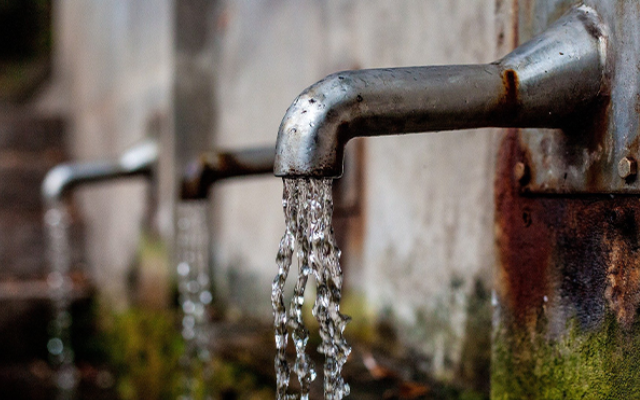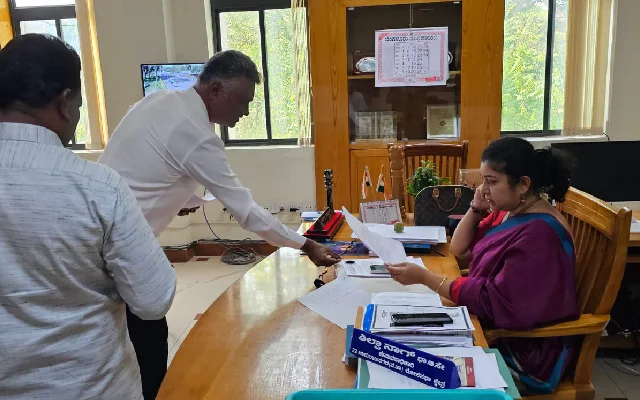
Safe and readily available water is important for public health, whether it is used for drinking, domestic use, food production or recreational purposes. Improved water supply and sanitation, and better management of water resources, can boost countries’ economic growth and can contribute greatly to poverty reduction.
In 2010, the UN General Assembly explicitly recognized the human right to water and sanitation. Everyone has the right to sufficient, continuous, safe, acceptable, physically accessible, and affordable water for personal and domestic use.
Drinking water services
Sustainable Development Goal target 6.1 calls for universal and equitable access to safe and affordable drinking water. The target is tracked with the indicator of “safely managed drinking water services” – drinking water from an improved water source that is located on premises, available when needed, and free from faecal and priority chemical contamination.
In 2017, 5.3 billion people used safely managed drinking-water services – that is, they used improved water sources located on premises, available when needed, and free from contamination. The remaining 2.2 billion people without safely managed services in 2017 included:
- 4 billion people with basicservices, meaning an improved water source located within a round trip of 30 minutes
- 206 million people with limitedservices, or an improved water source requiring more than 30 minutes to collect water
- 435 million people taking water from unprotected wells and springs
- 144 million people collecting untreated surface water from lakes, ponds, rivers and streams.
Sharp geographic, sociocultural and economic inequalities persist, not only between rural and urban areas but also in towns and cities where people living in low-income, informal, or illegal settlements usually have less access to improved sources of drinking-water than other residents.
Water and health
Contaminated water and poor sanitation are linked to transmission of diseases such as cholera, diarrhea, dysentery, hepatitis A, typhoid, and polio. Absent, inadequate, or inappropriately managed water and sanitation services expose individuals to preventable health risks. This is particularly the case in health care facilities where both patients and staff are placed at additional risk of infection and disease when water, sanitation, and hygiene services are lacking. Globally, 15% of patients develop an infection during a hospital stay, with the proportion much greater in low-income countries.
Inadequate management of urban, industrial, and agricultural wastewater means the drinking-water of hundreds of millions of people is dangerously contaminated or chemically polluted.
Some 829 000 people are estimated to die each year from diarrhea as a result of unsafe drinking-water, sanitation, and hand hygiene. Yet diarrhea is largely preventable, and the deaths of 297 000 children aged under 5 years could be avoided each year if these risk factors were addressed. Where water is not readily available, people may decide handwashing is not a priority, thereby adding to the likelihood of diarrhea and other diseases.
Diarrhea is the most widely known disease linked to contaminated food and water but there are other hazards. In 2017, over 220 million people required preventative treatment for schistosomiasis – an acute and chronic disease caused by parasitic worms contracted through exposure to infested water.
In many parts of the world, insects that live or breed in water carry and transmit diseases such as dengue fever. Some of these insects, known as vectors, breed in clean, rather than dirty water, and household drinking water containers can serve as breeding grounds. The simple intervention of covering water storage containers can reduce vector breeding and may also reduce fecal contamination of water at the household level.
Economic and social effects
When water comes from improved and more accessible sources, people spend less time and effort physically collecting it, meaning they can be productive in other ways. This can also result in greater personal safety by reducing the need to make long or risky journeys to collect water. Better water sources also mean less expenditure on health, as people are less likely to fall ill and incur medical costs, and are better able to remain economically productive.
With children particularly at risk from water-related diseases, access to improved sources of water can result in better health, and therefore better school attendance, with positive longer-term consequences for their lives.
Minimum Portable Water Standard
Appearance-1 Turbidity Unit
Chloride – 250 ppm
Fluoride – 1.4 to 2.4 mg/L
Sulfate – 250 ppm
Lead -0.05 mg/L
Fecal Coliforms -1/100 ml (Proposed: 0/100 ml)
Pyrogens -Not Specified
Other Microbes -Not Specified
Total Dissolved Solids -500 mg/L
Arsenic -0.05 mg/L
Barium -1.0 mg/L
Cadmium -0.010 mg/L
Chromium Hexavalent -0.05 mg/L
Chlorofor -0.7 mg/L
Cyanide -0.2 mg/L
Mercury -0.002 mg/L
Nitrate -10 mg/L
Selenium -0.01 mg/L
Silver -0.05 mg/L
Pesticides:
Chlorodane -0.003 mg/L
Endrin -0.0002 mg/L
Heptachlor -0.0001 mg/L
Heptachlor Epoxide -0.0001 mg/L
Lindane -0.004 mg/L
Methoxychlor -0.1 mg/L
Toxaphene -0.005 mg/L
2, 4-D -0.1 mg/L
2, 4, 5-TP (Silvex) -0.01 mg/L
Specific Resistance -10,000 ohms/cm (typically)
pH -6.5–8.5
Methods to make Potable water:
There are various methods through which normal water can be converted to potable water or drinking water
- Filtration: Filtration is very helpful in purifying water. Basically, there are two types of filters that can be found on the market. Some are those which rely on carbon filters and remove the bacteria and others are those which use chemicals like iodine for the treatment of water. Filters are very heavy and require frequent replacement and are also very expensive.
- Distillation: Distillation of water involves boiling water and collecting the vapor and leaving the bacteria and contaminants behind. Distilled water is one of the purest forms of water, 98% of the contaminants are removed from the home distillation system and it gives water which is purer than that from filters.
- Boiling: The easiest way to purify water is boiling. It neutralizes a majority of viruses and bacteria in the supply but it cannot remove all the heavy contaminants.
Challenges
Climate change, increasing water scarcity, population growth, demographic changes and urbanization already pose challenges for water supply systems. By 2025, half of the world’s population will be living in water-stressed areas. Re-use of wastewater, to recover water, nutrients, or energy, is becoming an important strategy. Increasingly countries are using wastewater for irrigation – in developing countries this represents 7% of irrigated land. While this practice if done inappropriately poses health risks, safe management of wastewater can yield multiple benefits, including increased food production.
Options for water sources used for drinking water and irrigation will continue to evolve, with an increasing reliance on groundwater and alternative sources, including wastewater. Climate change will lead to greater fluctuations in harvested rainwater. Management of all water resources will need to be improved to ensure provision and quality.
WHO’s response
As the international authority on public health and water quality, WHO leads global efforts to prevent transmission of waterborne disease, advising governments on the development of health-based targets and regulations.
WHO produces a series of water quality guidelines, including on drinking-water, safe use of wastewater, and safe recreational water environment. The water quality guidelines are based on managing risks, and since 2004 the Guidelines for drinking-water quality promote the Framework for Safe Drinking-water. The Framework recommends establishment of health-based targets, the development and implementation of Water Safety Plans by water suppliers to most effectively identify and manage risks from catchment to consumer, and independent surveillance to ensure that Water Safety Plans are effective and health-based targets are being met.
WHO also supports countries to implement the drinking-water quality guidelines through the development of practical guidance materials and provision of direct country support. This includes the development of locally relevant drinking-water quality regulations aligned to the principles in the Guidelines, the development, implementation and auditing of Water Safety Plans and strengthening of surveillance practices.
- Guidelines for drinking-water quality
- Water Safety Plan resources
- Developing drinking-water quality regulations and standards
Since 2014, WHO has been testing household water treatment products against WHO health-based performance criteria through the WHO International ‘Scheme’ to Evaluate Household Water Treatment Technologies. The aim of the scheme is to ensure that products protect users from the pathogens that cause diarrheal disease and to strengthen policy, regulatory, and monitoring mechanisms at the national level to support appropriate targeting and consistent and correct use of such products.
WHO works closely with UNICEF in a number of areas concerning water and health, including on water, sanitation and hygiene in health care facilities. In 2015 the two agencies jointly developed WASH FIT (Water and Sanitation for Health Facility Improvement Tool), an adaptation of the water safety plan approach. WASH FIT aims to guide small, primary health care facilities in low- and middle-income settings through a continuous cycle of improvement through assessments, prioritization of risk, and definition of specific, targeted actions.A 2019 report describes practical steps that countries can take to improve water, sanitation and hygiene in health care facilities.
About the Author
Dr V Basil Hans has been teaching economics for UG and PG students for over three decades. He has produced six MPhils and three PhDs. He has written more than 200 articles and more than 25 books. He is the recipient of international researcher award.
Image courtesy Users by Pixabay



















